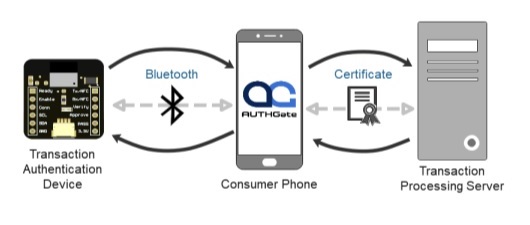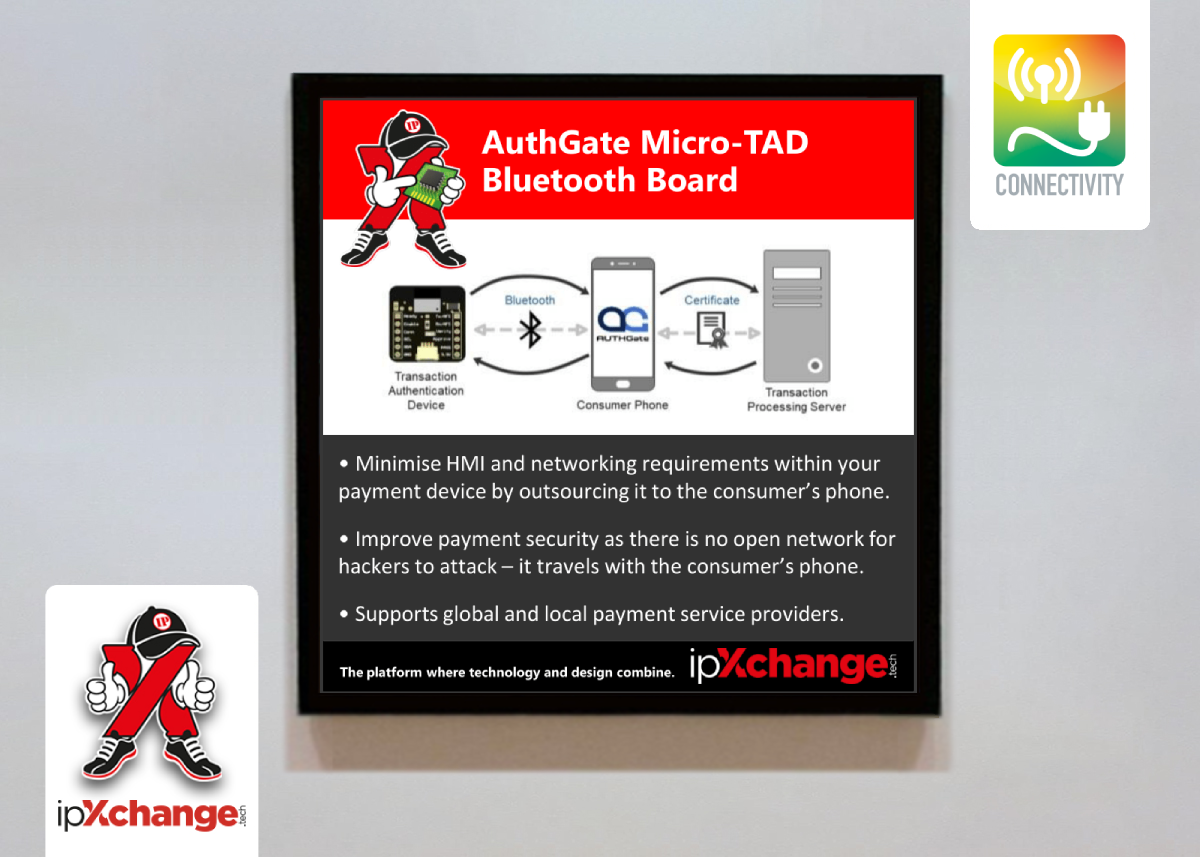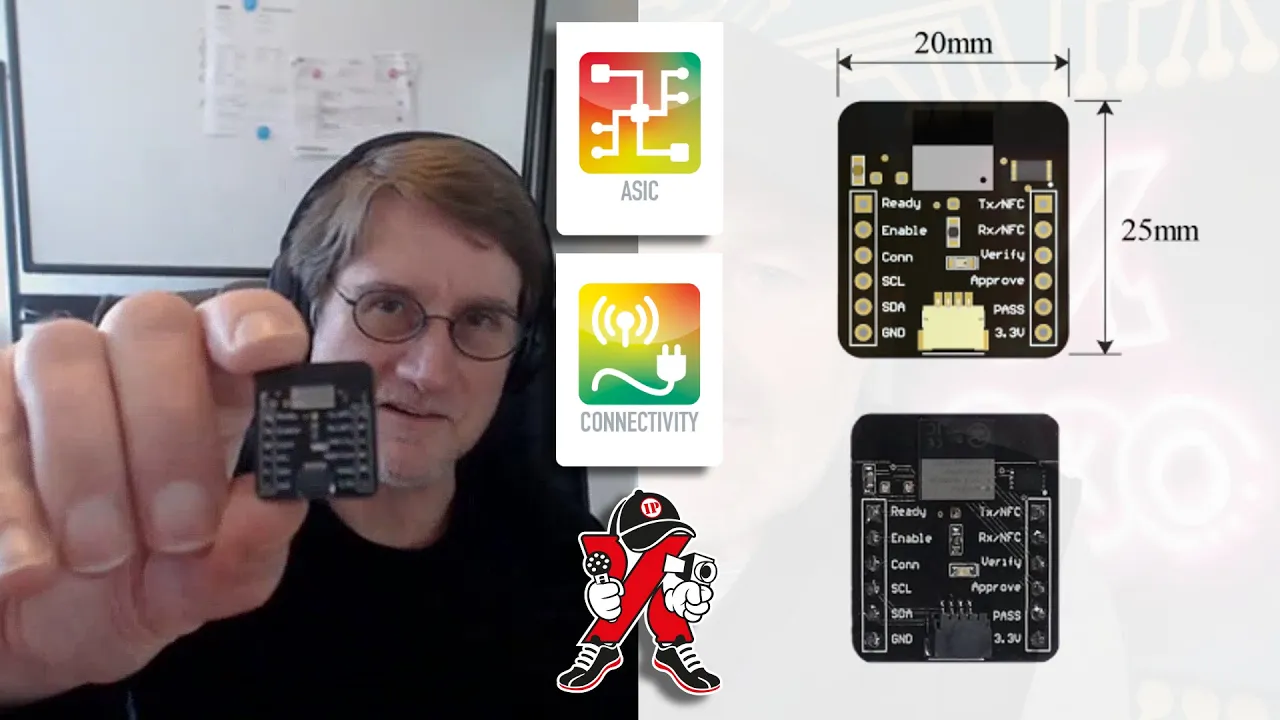AuthGate’s Micro-TAD (Transaction Authentication Device) board can be used to add IoT functionality to end devices that feature embedded payment acceptance and user verification functionality, without the requirement for internet connectivity within this end device. The principle of operation is simple:
Step 1: The consumer’s phone establishes a Bluetooth connection with the TAD.
Step 2: The consumer is then redirected to the transaction server to complete the transaction on their phone using their own internet connection.
Step 3: The server then returns the transaction verification certificate to the TAD via the consumer’s phone.
The single point of internet connection provided by the end-user’s phone, or other Bluetooth device, reduces the complexity and power consumption of a TAD device while simultaneously increasing security as there is no open device network for hackers to attack. More specific applications for this device include providing digital signatures, system setup and configuration, and access control.
Security in the connection is handled by AuthGate’s payment system and the Micro-TAD, which is built around Nordic Semiconductor’s nRF52 Bluetooth chip with added cryptographic functionality. This 20 x 25 mm module can be integrated into new or existing products using an I2C interface with a Qwiic / Stemma QT compatible connector, or through direct control using dedicated I/O ports.
Additionally, the consumer’s phone can act as the HMI for the TAD, resulting in dramatically reduced B-O-M cost and power consumption in your IoT device. For some applications, the power source can be reduced to a single coin-cell battery simply to keep the TAD running.
Apps on the user’s device can also be used to perform secondary functions such as payments, identity and age verification, authentication, etc, via standard global, and even local, service providers, including:
- Apple Pay
- Bitcoin Lightning
- Google and Google Pay
- Microsoft
- PayPal
- Bancontact (Belgium)
- Giropay (Germany)
- iDEAL and iDIN (Netherlands)
- Masterpass/Zapper/Snapscan (South Africa)
- Other regional or government digital ID apps
This means that developers do not need to program this functionality into their devices, and it also leaves open the possibility for additional user-experience functionality, such as loyalty schemes, to be implemented by the third-party payment providers.
AuthGate’s technology has already been employed in a number of use cases, but the Micro-TAD board is currently starting beta evaluation and testing before commercial release. If you have an interesting commercial application or use case, fill in the form below, and ipXchange will facilitate conversation with AuthGate. If AuthGate are happy to take your project on at this early stage, an evaluation board may be provided to assist in your product development.



